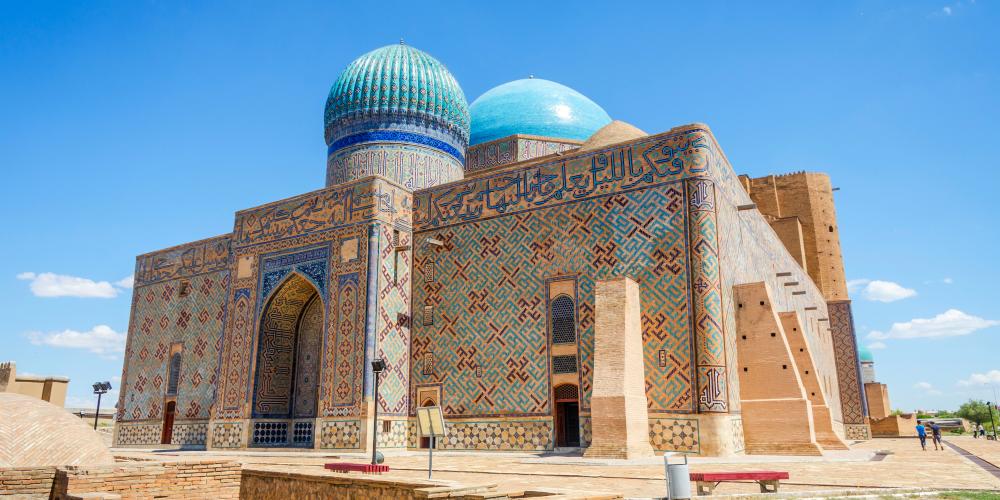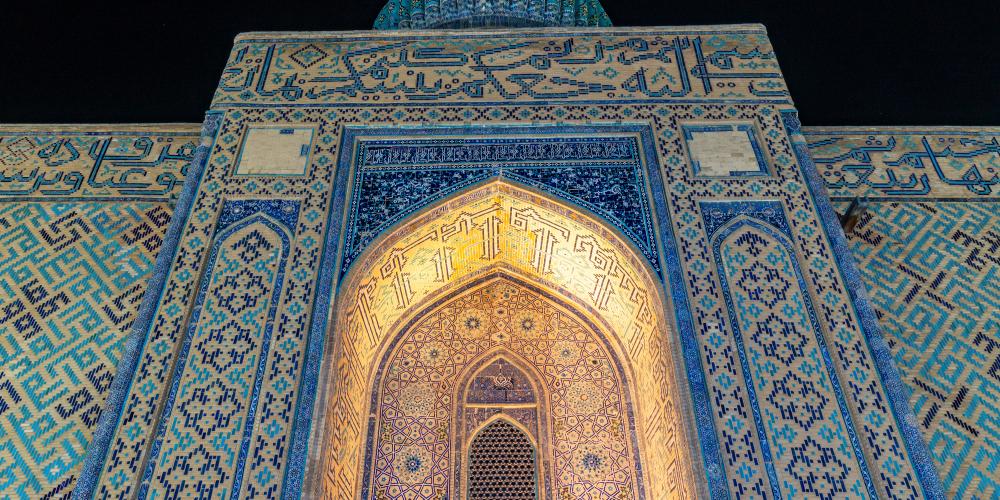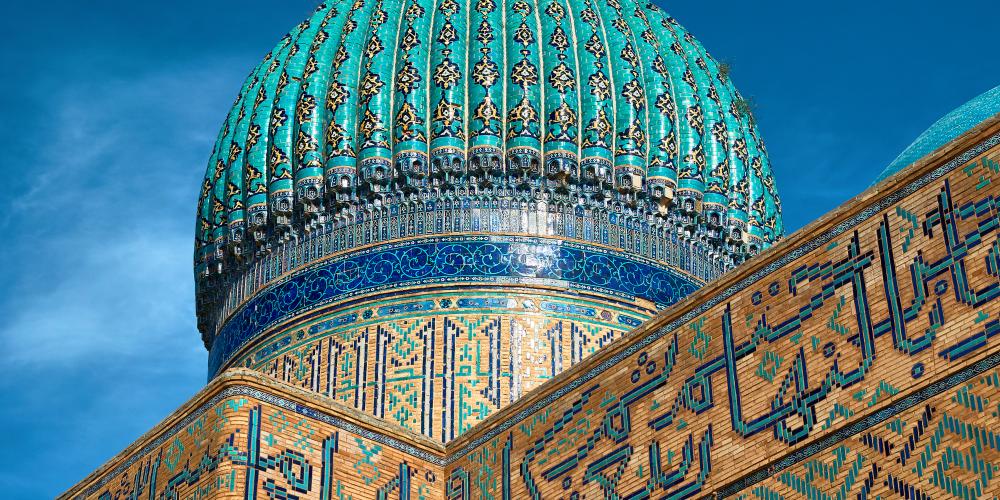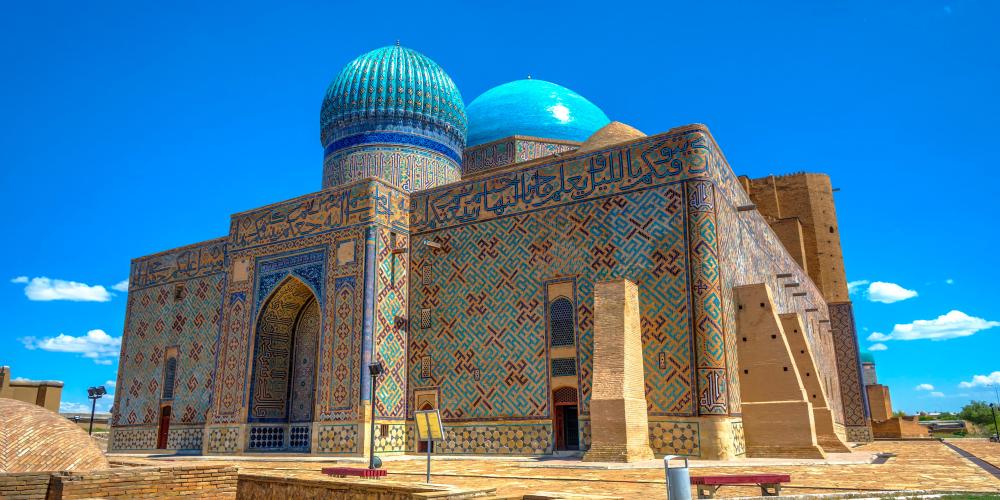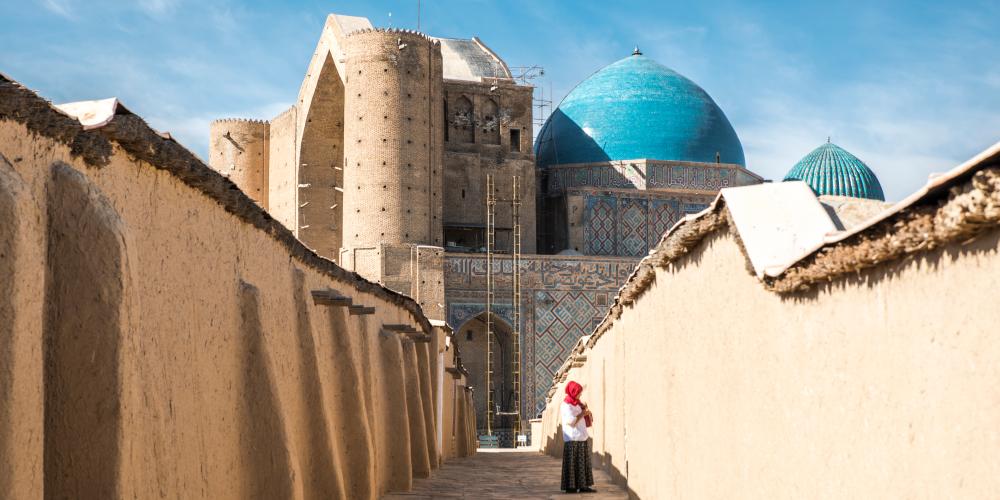Mausoleum of Khoja Ahmed Yasawi

The great conqueror Timur was one of history's most successful military geniuses... and one of its most violent. As Timur waged his wars across 14th-century Central Asia, scholars estimate that his armies killed up to 17 million people. By the time he was finished, the Timurid Empire that he founded stretched across all of Central Asia, from India in the east to Turkey in the west, and into far regions of Russia and the Middle East.
Timur was also an exemplary intellectual and strategist, who understood the power of religion and art. It is these two character traits that led to the construction of the Mausoleum of Khoja Ahmed Yasawi. After he conquered the region around Turkestan in southern Kazakhstan, he ordered the creation of a large mausoleum, mosque, and madrassah in the town then known as Yasi. Now known as Turkestan, the modern city effectively establishes the shared historical and cultural lineages. In particular, the grave of Khoja Ahmed Yasawi, a revered 12th-century spiritual prophet, brings together the visual representation of the Timurid period with culturally significant religion and art of the time.
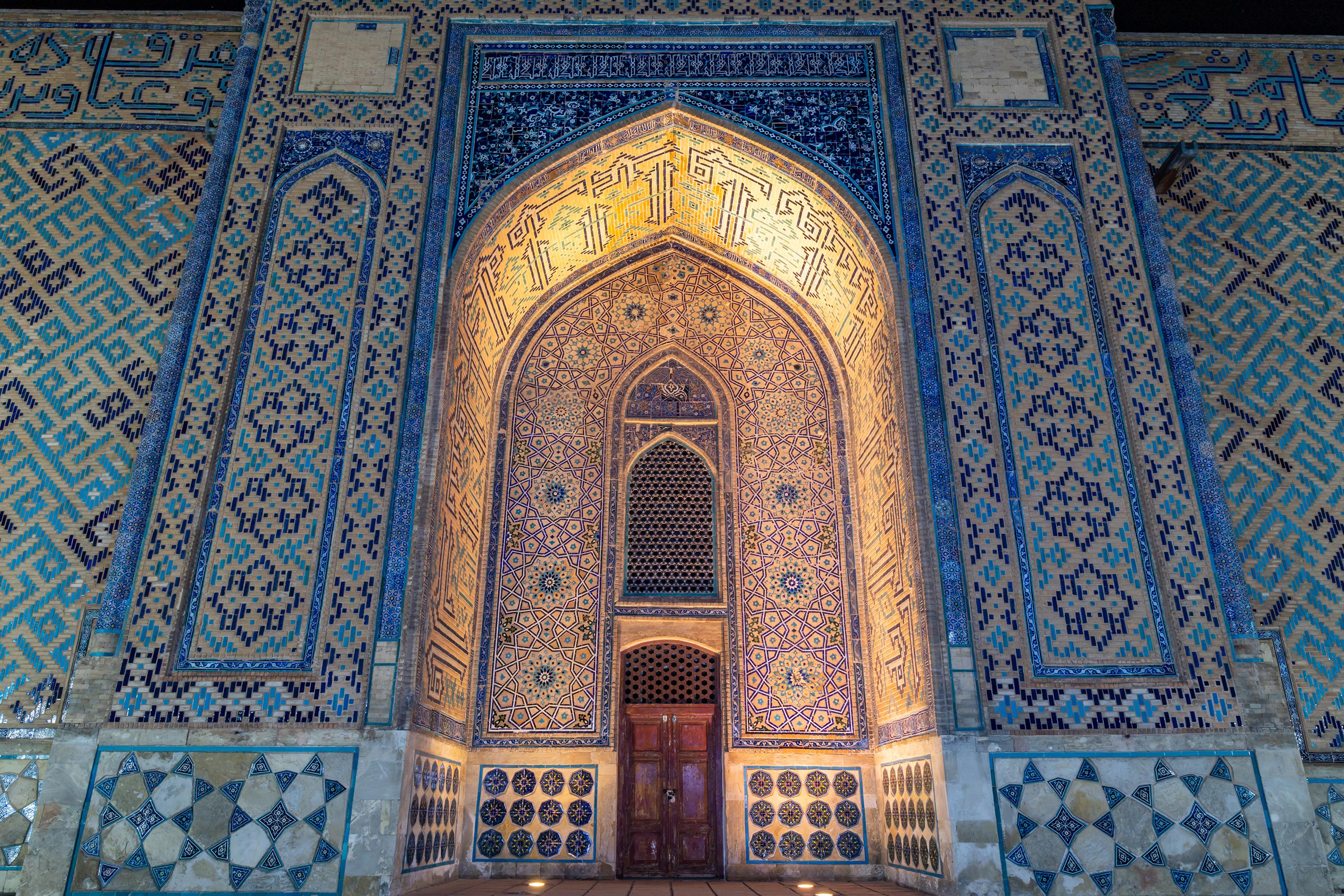
Timur is said to have participated personally in the design of the mausoleum, wanting to create a national monument not just for political convenience. For the first time, he brought master builders from artistic centres like Shiraz and Isfahan (a tactic he would later employ for his capital at Samarkand) and they created innovative spatial arrangements with experimental vaults and domes. Because these new feats of engineering were so successful, Timur would go on to also use them in his capital city of Samarkand. Modern-day travellers can also witness the direct culmination of Timurid architecture at the Taj Mahal.
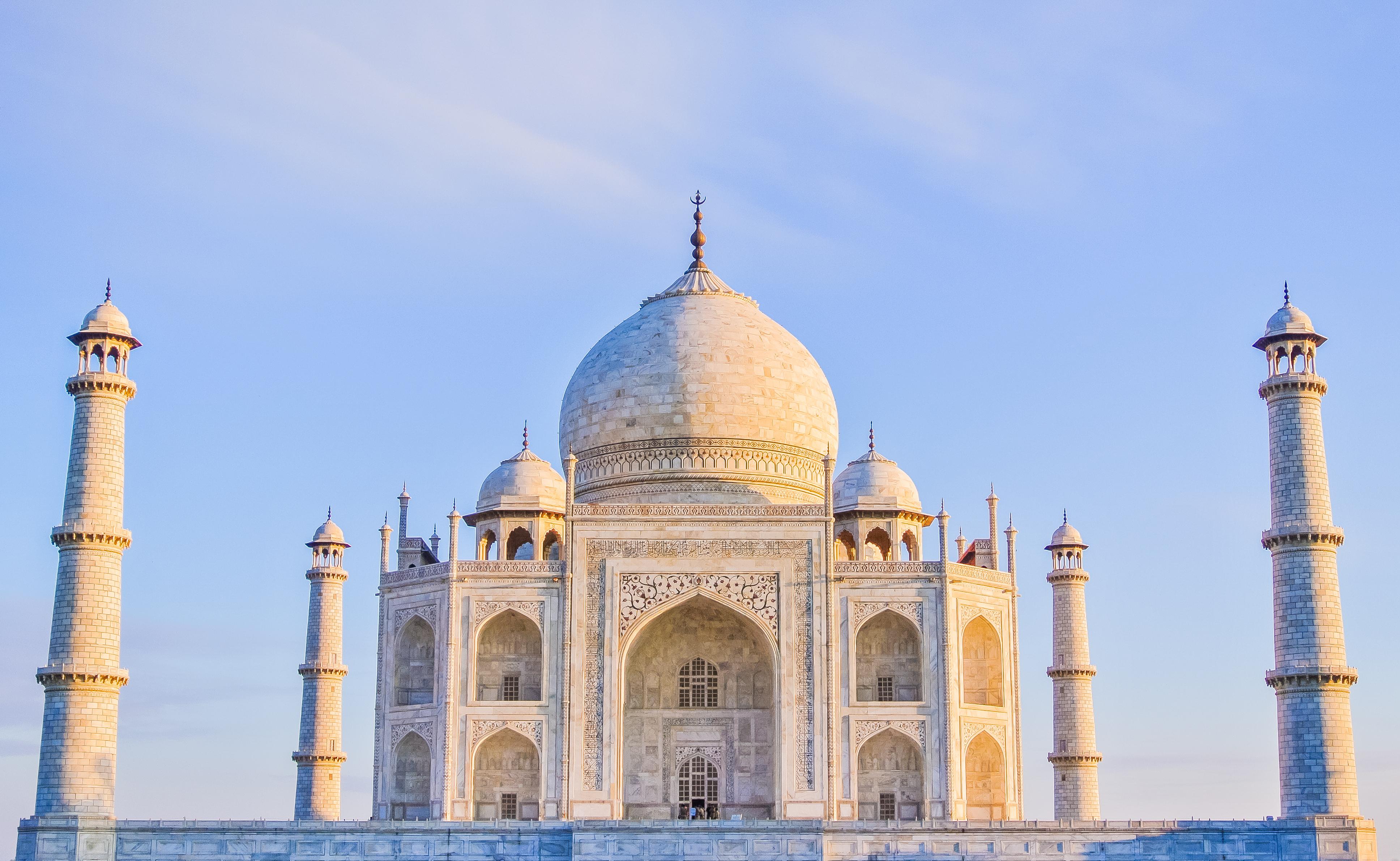
The Mausoleum of Khoja Ahmed Yasawi was commissioned in 1389 and remained incomplete upon the death of Timur in 1405. Because of this, the entrance and some parts of the complex's interior have been left unfinished. But the large building with its vibrant colourful dome quickly became an icon of Turkestan and Kazakhstan's cultural heritage. The city would go on to be the capital of the Kazakh Khanship between the 16th and 18th centuries, developing into an important centre for trade and craft, with the mausoleum always at the cultural and religious centre. Many batyrs, generals, and dignitaries have been buried on the World-Heritage-listed grounds of Kul'tobe for generations.
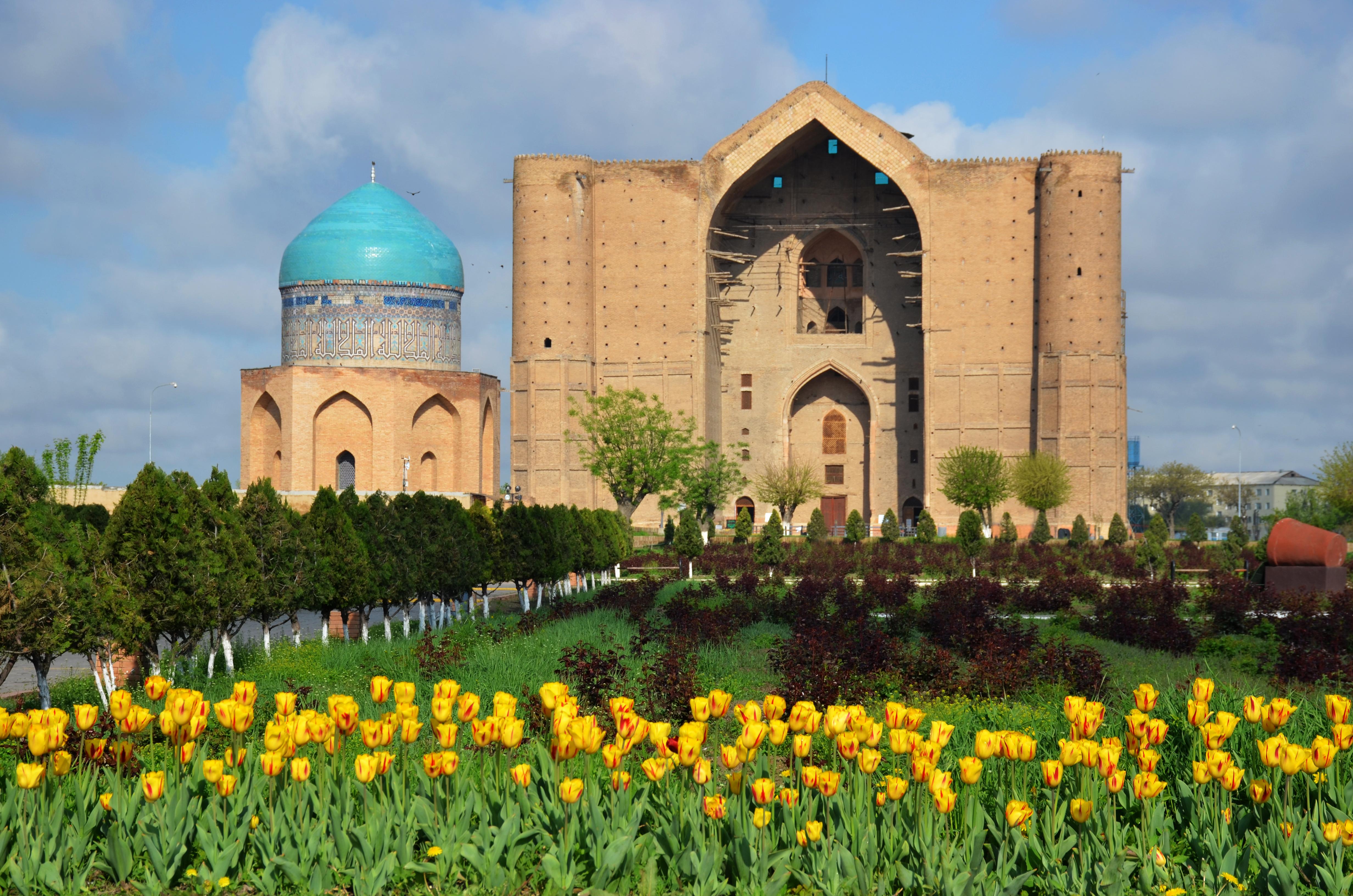
Who was Khoja Ahmed Yasawi?
Born in 1103, Ahmad Yasawi was a poet and a spiritual leader who had a large influence on the development of Sufism, a mystical expression of the Islamic faith. With his poetry and teachings, Yasawi highlighted the important role nomadic Turks played in the spread of Islam. Ahmad Yasawi would become the head of the Turkic branch of Sufism as it developed into several regional schools during the 12th century.
Legend says Khoja Ahmed Yasawi was placed on a camel by his parents and instructed to live wherever the camel stopped - which turned out to be the ancient city of Yasi, now Turkestan. However, little is actually known about his life, beyond his teachings. He's said to have studied Islam in Bukhara for a period of time, before returning to Yasi where he died in 1166. Ancient texts and narrative renditions state he spent his final years in an underground cell he dug himself.
Ahmed Yasawi promoted his idea of Sufism, which sustained the diffusion of Islam. His teachings, schools, and sphere of influence prevented its downfall in Central Asia, particularly after the Mongol invasion in the 12th century. The importance of his legacy can be felt and revered in Sufi poetry. Throughout the centuries his influential writings continually impress on Turkestan's cultural history. The Helvet Underground Mosque built over his school continues to be an important pilgrimage site for modern generations.
Timur may have used Khoja Ahmed Yasawi's resting place to establish his great empire across the Eurasian Steppe. Yet, Khoja Ahmed Yasawi's legacy also benefited, as Timur promoted his teachings and ensured his legend could never be forgotten. Restoration work and masterful construction has ensured the iconic and timeless mausoleums survival into the modern day.
Nestled on the edge of the Kazakh steppe, the incredible mausoleum towers above the cityscape of Turkestan. Soaring 38.7 metres into the sky, the main building's blue, turquoise, and golden tiles draw the eyes upward as you walk toward the complex. Although it is in a distinctive unfinished state, the mausoleum contains 35 rooms, including a library, bathhouse, and classrooms. With original wall paintings, Kufi and Suls wall inscriptions, and an ancient bronze cauldron, the complex epitomises the Kazakh cultural identity and marks the beginning of religious Timurid architecture. Located within the World Heritage site is the Hilvet Underground Mosque and ancient settlement of Kul'tobe.
How to get there
The nearest airport is in Shymkent in the southern region of Kazakhstan. Visitors can fly to Shymkent via Astana or Almaty and travellers can undertake the border crossing from Tashkent in Uzbekistan (with the appropriate documentation and visa). In Shymkent, a taxi or bus are the most convenient options to the site. Local transportation can include a marshrutka and a minibus designated for the city centre of Turkestan.
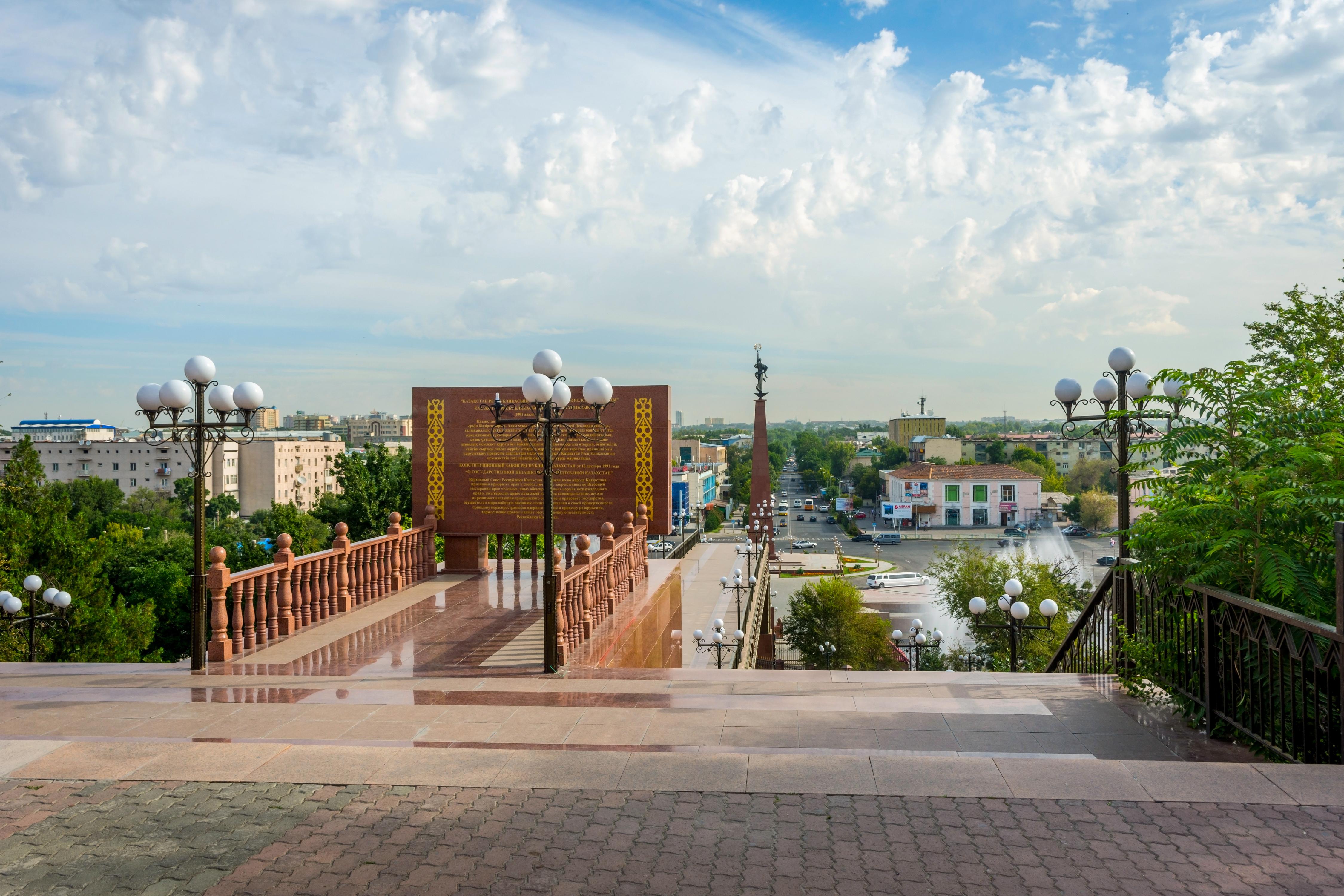
When to visit
The best time to visit Turkestan is between April and October. The temperatures are consistently hot and dry but are best between July and September.
How to Visit
You'll need about two hours to view the entirety of the complex. Feel free to roam the grounds and be mindful of the religious importance. The entrance is free for locals, but foreigners will need to buy an entrance ticket. Respectful dress is expected, which includes covering your shoulders and not wearing shorts or skirts.
